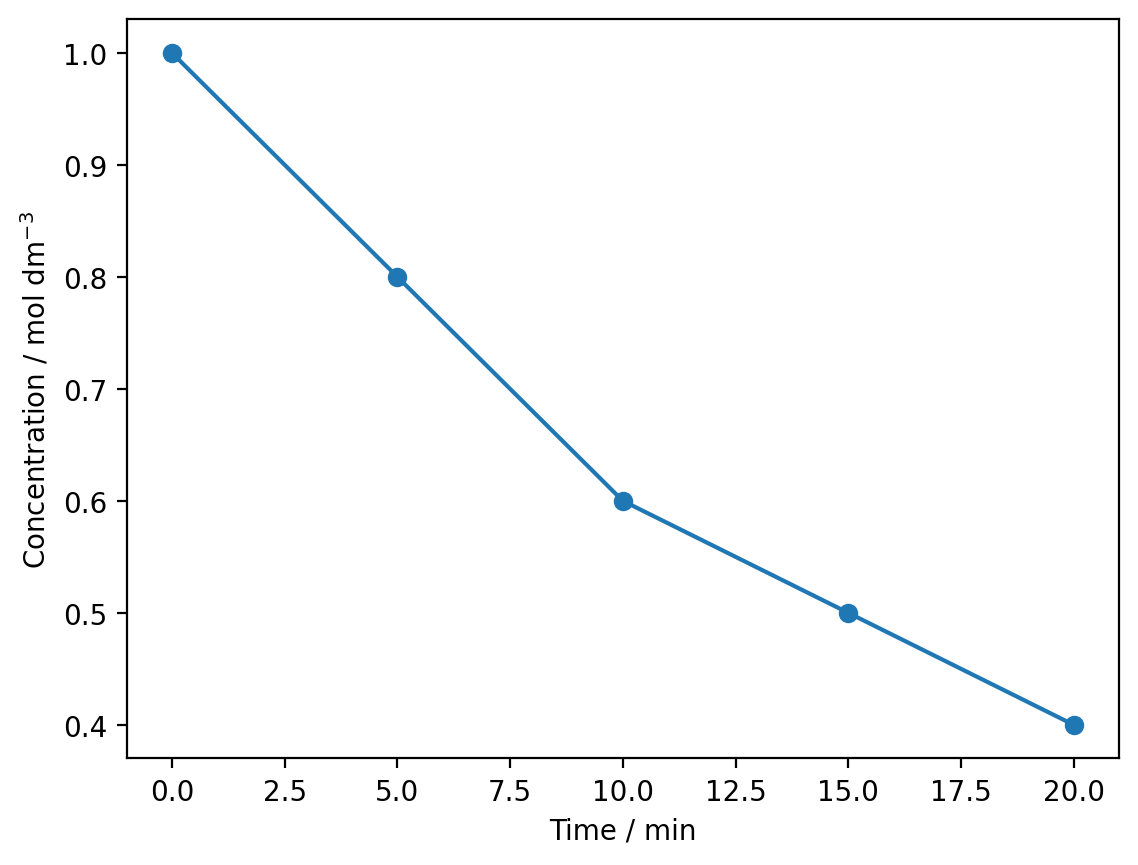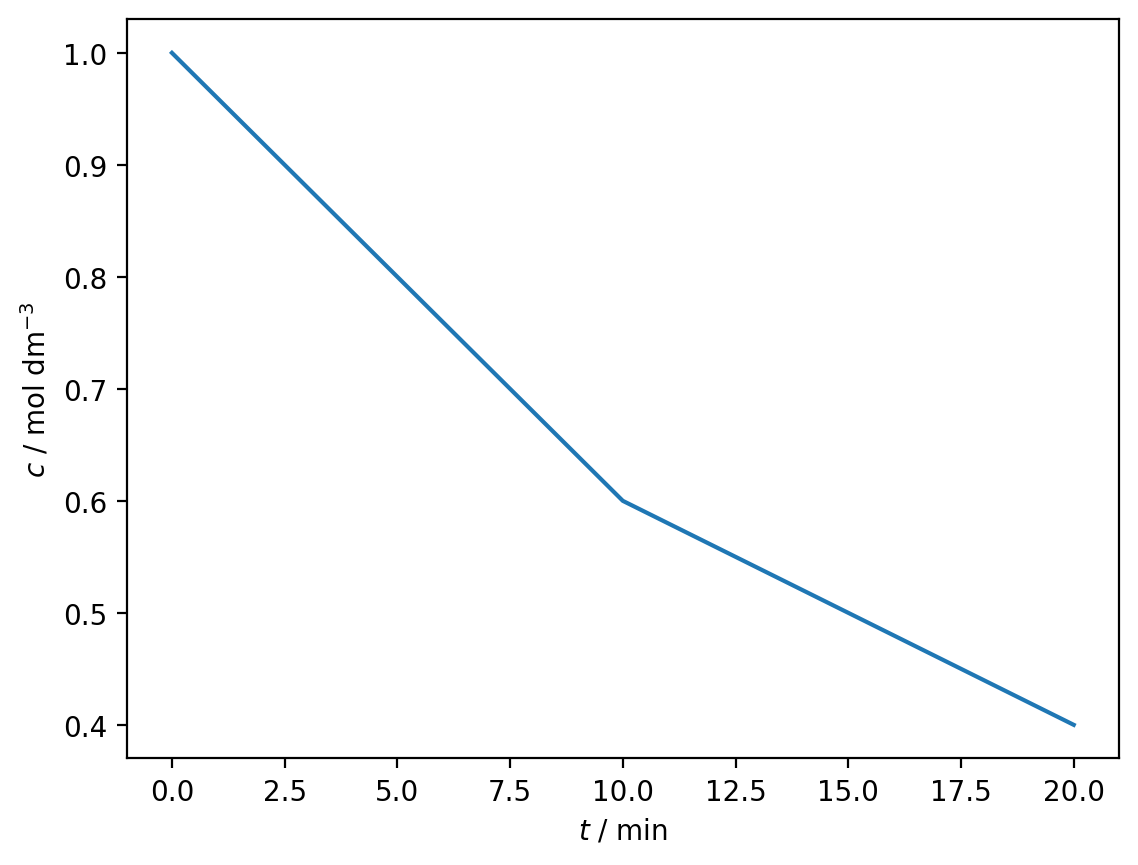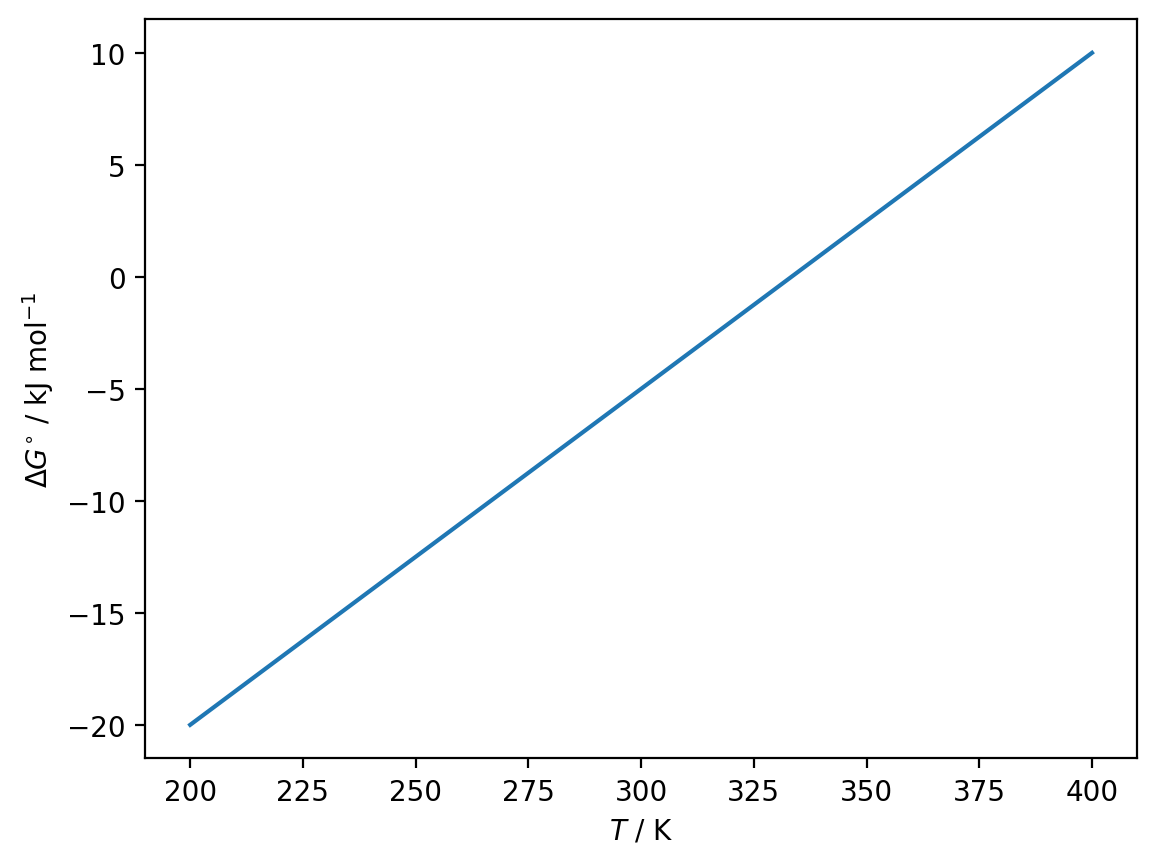LaTeX Formatting#
In scientific writing, you need to format mathematical expressions, chemical formulae, and units correctly. Jupyter notebooks and matplotlib both use LaTeX notation for mathematical typesetting.
Mathematical Expressions in Markdown#
To write mathematical expressions in markdown cells, wrap them in dollar signs $...$ for inline mathematics or $$...$$ for displayed equations.
Basic syntax:
You type |
You get |
|---|---|
|
\(x_i\) |
|
\(x^2\) |
|
\(\alpha\), \(\beta\), \(\Delta\) |
|
\(\frac{a}{b}\) |
|
\(E = mc^2\) |
Example:
The Arrhenius equation is $k = A e^{-E_a/RT}$.
Renders as:
The Arrhenius equation is \(k = A e^{-E_a/RT}\).
Chemical Formulae and Equations#
Chemical formulae should be typeset in upright (non-italic) text, not as mathematical variables: e.g., H2O, rather than \(H_2O\).
There are two approaches:
Using LaTeX \mathrm{}#
The \mathrm{} command produces upright (non-italic) text in math mode:
You type |
You get |
|---|---|
|
\(\mathrm{H_2O}\) |
|
\(\mathrm{CO_2}\) |
|
\(\mathrm{NaCl}\) |
|
\(\mathrm{H_2SO_4}\) |
Using HTML#
Alternatively, you can use HTML tags for subscripts and superscripts:
You type |
You get |
|---|---|
|
H2O |
|
CO2 |
|
10-3 mol dm-3 |
HTML tags work in markdown cells but not in matplotlib labels.
LaTeX in Matplotlib Labels#
The same LaTeX syntax used in markdown cells works in matplotlib labels. Wrap mathematical expressions in dollar signs $...$.
import numpy as np
import matplotlib.pyplot as plt
%config InlineBackend.figure_format='retina'
time = np.array([0, 5, 10, 15, 20])
concentration = np.array([1.0, 0.8, 0.6, 0.5, 0.4])
plt.plot(time, concentration, 'o-')
plt.xlabel('Time / min')
plt.ylabel('Concentration / mol dm$^{-3}$')
plt.show()
Variables in labels should be italicised by wrapping them in $...$:
For expressions containing backslashes (like Greek letters or special commands), use the r prefix to create a “raw” string. This prevents Python from interpreting the backslashes:
temperature = np.linspace(200, 400, 50)
delta_G = -50 + 0.15 * temperature
plt.plot(temperature, delta_G)
plt.xlabel(r'$T$ / K')
plt.ylabel(r'$\Delta G^{\circ}$ / kJ mol$^{-1}$')
plt.show()
Exercise#
Create a plot showing the relationship between inverse temperature and the natural logarithm of the rate constant (an Arrhenius plot).
Use this data:
inverse_temp = np.array([0.0025, 0.0027, 0.0029, 0.0031, 0.0033]) # K^-1
ln_k = np.array([-8.5, -7.8, -7.2, -6.7, -6.2])
Your plot should have:
x-axis label: \(T^{-1}\) / K\(^{-1}\) (with proper formatting)
y-axis label: ln \(k\) (with \(k\) italicised)
A title: “Arrhenius Plot”
Show solution
inverse_temp = np.array([0.0025, 0.0027, 0.0029, 0.0031, 0.0033])
ln_k = np.array([-8.5, -7.8, -7.2, -6.7, -6.2])
plt.plot(inverse_temp, ln_k, 'o-')
plt.xlabel(r'$T^{-1}$ / K$^{-1}$')
plt.ylabel(r'ln $k$')
plt.title('Arrhenius Plot')
plt.show()
Summary#
You have learned how to:
Write mathematical expressions in markdown using
$...$Format subscripts with
_and superscripts with^Use Greek letters and fractions in LaTeX notation
Format chemical formulae correctly using
\mathrm{}Apply the same LaTeX syntax to matplotlib labels
Use raw strings (
r'...') for expressions containing backslashes



